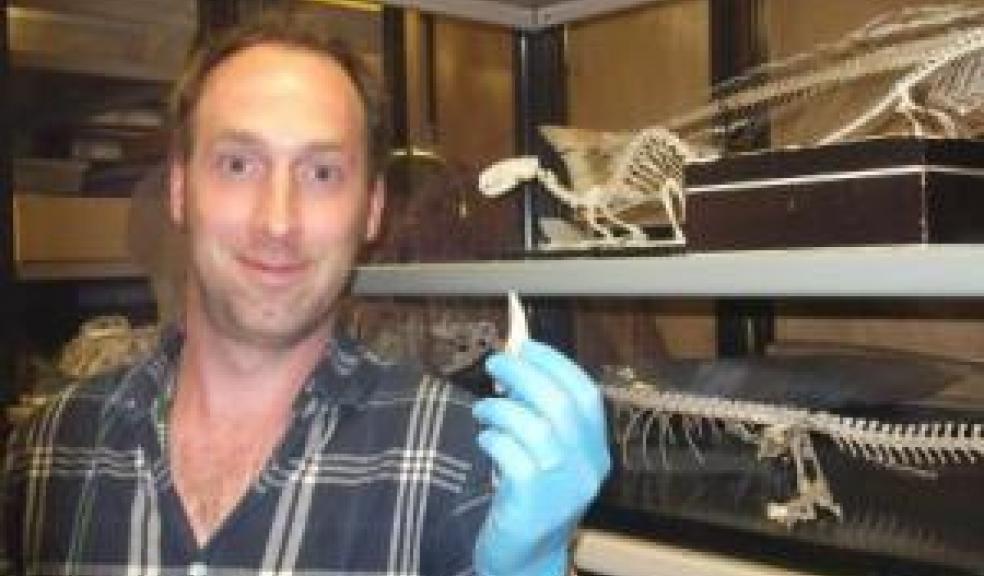
Research reveals origins of mysterious ‘Tiger Tooth’
Joint research between Plymouth City Museum and Art Gallery and a member of the public has uncovered the truth about a mysterious animal tooth once believed to belong to an Ice Age leopard.
The tooth was discovered in a spoil heap in a Plymouth garden in 1960 and taken into the museum for identification in the spring of 2013 by its owner, Mr Rickard.
Previously nicknamed the ‘Tiger Tooth’ by Mr Rickard’s family, it was quickly identified as belonging to a leopard. What was less clear was where it had originated from.
The tooth was sent to Professor Jane Evans at the British Geological Survey, who tested it for an element called strontium. This is found in varying levels in the soil throughout the British Isles and could have helped reveal the tooth’s origins.
“At this point we believed the tooth may date to the Ice Age,” said Jan Freedman, natural history curator at the Museum and Art Gallery. “Plymouth has many sites where the remains of Ice Age creatures have been excavated. The list of creatures that once lived in this area is huge and includes woolly mammoths, woolly rhinoceros, hyenas, reindeer, hippopotamus and cave lions.”
However the results from the survey were unexpected and revealed very high levels of strontium, indicating that the tooth was not from Britain at all.
Thanks to support from the Marc Fitch Fund, a funding body that provides small grants to heritage, conservation and historic environment projects, the tooth was then sent to Oxford University for radiocarbon dating. These results revealed that the tooth was around 187 years old – much younger than previously thought.
While these tests were taking place Mr Rickard began to research the history of the house where the tooth had originally been discovered by his father.
It was discovered that the house had been built on the grounds of a large regency property that had been knocked down in the 1920s and had belonged to a Dr Meetham, the brother of Linnaeus Tripe.
Linnaeus Tripe (1822-1902) was originally from Devonport and was one of the 19th century’s earliest-known photographers. From 1852 to 1860 he worked for the East India Company and captured many beautiful images of both India and Burma (now Myanmar).
The majority of his amazing glass-plate negatives are held at the Victoria and Albert Museum, London but the Museum and Art Gallery holds an additional nine in its collections.
From the results of the scientific and local history research it has now been concluded that the tooth must have travelled back from India or Burma with Linnaeus, who then passed it on to his brother. Mr Rickard has since donated the tooth to the Museum and it will go on display later in the autumn.
Deputy Council Leader Peter Smith said: “While it may not date from the Ice Age as once believed, there’s a fascinating story behind this tooth which has only come to light thanks to the combined efforts of our staff and Mr Rickard. Linnaeus Tripe occupies a very special place in the history of early photography. We’re very pleased to have been able to add a natural history specimen with such strong links to him to our permanent collections.”
The full story behind the discovery has just been published by Jan Freedman and Professor Jane Evans in the online journal Open Quaternary.











